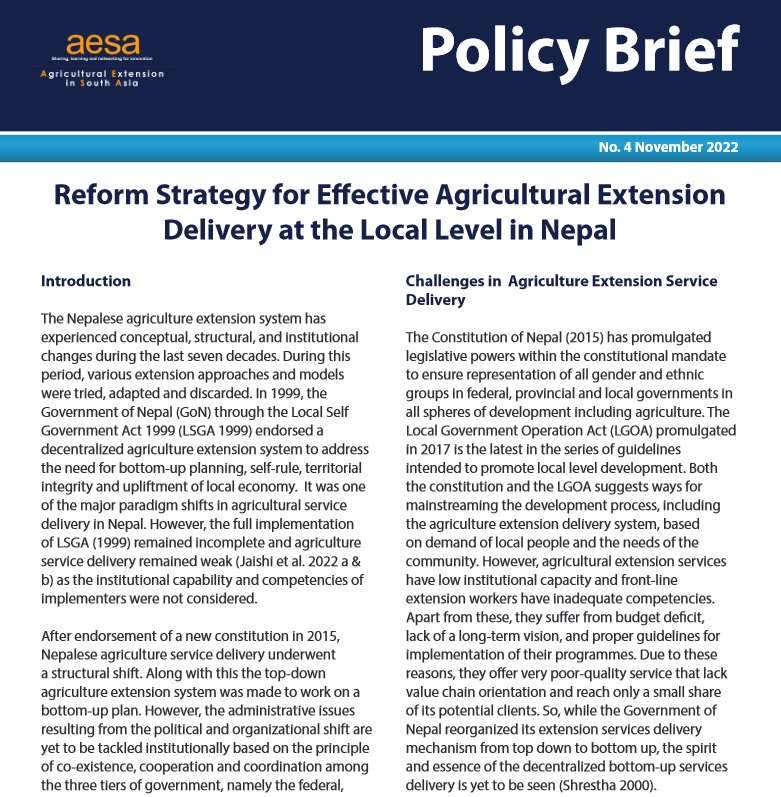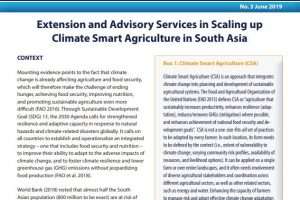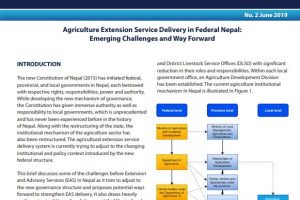The Nepalese agriculture extension system has experienced conceptual, structural, and institutional changes during the last seven decades. During this period, various extension approaches and models were tried, adapted and discarded. In 1999, the Government of Nepal (GoN) through the Local Self Government Act 1999 (LSGA 1999) endorsed a decentralized agriculture extension system to address the need for bottom-up planning, self-rule, territorial integrity and upliftment of local economy. It was one of the major paradigm shifts in agricultural service delivery in Nepal. However, the full implementation of LSGA (1999) remained incomplete and agriculture service delivery remained weak (Jaishi et al. 2022 a & b) as the institutional capability and competencies of implementers were not considered.
After endorsement of a new constitution in 2015, Nepalese agriculture service delivery underwent a structural shift. Along with this the top-down agriculture extension system was made to work on a bottom-up plan. However, the administrative issues resulting from the political and organizational shift are yet to be tackled institutionally based on the principle of co-existence, cooperation and coordination among the three tiers of government, namely the federal, provincial, and the local. As a result, agriculture service delivery has been adversely impacted. Without a sound agricultural extension policy framework, streamlining agricultural extension service delivery is almost impossible (Shrestha 2022).





Add Comment